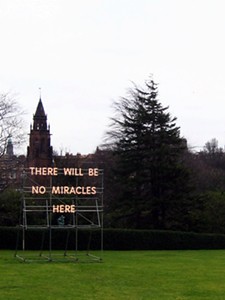As a heatwave has swept across the UK, activities in Casa Bookish have been kept to a bare minimum. Oh, there was that trip to Linlithgow Palace, a trip to Edinburgh, some art exhibitions, designing/plotting, preparations for the launch of new Autumn/Winter yarn collections - but mainly I have languished in the shade with an ice cream for company. I've enjoyed some really fantastic and thought-provoking Twitter conversations about hand-knitting, fashion, and women's self-image. So, in short: I don't exactly lack blog post material. I just lack the energy and presence of mind to write the blog posts! What's a girl to do? Well, I have some choice links for you to peruse whilst I hope for cooler temps to hit my corner of the UK:
- Ventures & Adventures in Topography - a podcast about rambling through London using old walking guides. Yes, I continue to be fascinated by psychogeography - how we interact with landscapes and how landscapes interact with us.
- Speaking of which: Cafe Pantopia - trying to establish "a common meeting-place that traverses the vast distances of the North Atlantic Ocean." I am a North Atlantic Ocean girl and I love, love, love this idea.
- Fringe Association is my new favourite knitting blog. There. I said it. She makes me look at things differently. FA is a refreshing, smart look at knitting, style, and design.
- I am currently teaching myself (very basic) French using DuoLingo. I'd quite like an outline of basic grammar alongside vocabulary lessons and commonly used phrases, but I genuinely feel like I'm learning Stuff.
- Fancy living somewhere which has serious literary credentials? Why, William Blake's cottage is for sale!
- And this serves a neat segueway into the Man Booker longlist. The jury is spear-headed by Robert MacFarlane whose The Old Ways is my current bedside table book. In Days of Yore I would have had Opinions but Opinions have been wilted by the heat and an insane amount of work knitting.
- I have finished a book recently, though. Yes, That Book by That Author. I enjoyed it - and it was very low on gore which I appreciated. I am a squeamish reader in some ways.
And how are you doing?

